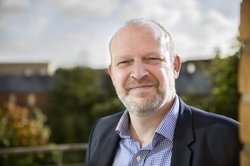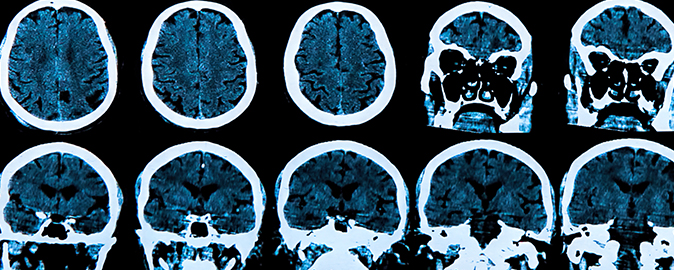In a comprehensive study published in the journal Nature Communications, researchers have studied the structure, function and mechanisms of the protein ATP8B1, which flips lipid molecules in our cell membranes and plays a key role in bile biosynthesis. Importantly, ATP8B1 has also emerged as a genetic marker of Alzheimer’s resilience. These results give new possibilities for therapeutic interventions in conditions related to bile homeostasis disorders and neurodegenerative diseases.
For years, clumping of the alpha-synuclein protein (aSN) has been known as a central player in diseases that break down the brain and its functions. However, the function of native, soluble aSN has been unknown. But new research from Aarhus University with international collaborations has revealed that natural aSN activates an important calcium pump in the cell membrane. Regulation of calcium signals is thus disrupted by the aggregation of aSN. This discovery is an important step towards understanding the complex biological mechanism behind diseases such as Parkinson's in order to ultimately cure them.
The so-called NKCC1 protein is found throughout the human body where it has important functions in organs that process fluids or perform neurotransmission. A Danish research team has now determined a three-dimensional atomic structure of the NKCC1 protein, which supports future work to identify novel compounds that interfere with NKCC1 function. Such compounds may help in, for example, kidney and brain disorders.
The human flippase ATP8B1 is critical for proper excretion of bile in the liver, and mutations of ATP8B1 are associated with severe liver diseases. The three-dimensional structure by cryo-EM along with functional studies reveal how ATP8B1 is autoinhibited through its N- and C-terminal segments and contribute to the understanding of regulatory mechanisms of ATP8B1 that may also open up new opportunities for drug development.
Cell viability require that a variety of functions at the cell membrane are maintained properly. P-type ATPases translocate substrates across the membrane, and they have evolved into different types taking care of specific substrates within a diverse range. Now, key structural aspects have been described on how two different types of P-type ATPases – a Ca2+ transporting Ca2+-ATPase and a lipid transporting P4-ATPase - have adapted to different substrates and physical environments.
A normal function of the heart and nerve system is, among other things, dependent on proper regulation of calcium in the cells. This process depends on the proper functioning of the calcium pump. New studies of the calcium pump structure give new insight into this process, which may help with the development of new drugs for treatment such as Parkinson's disease and heart failure.
A multidisciplinary research team at Aarhus University has provided fundamental new insight into the mechanism of the medical drug dimethyl fumarate, which is the active component of important treatments for multiple sclerosis and psoriasis. The results contribute to the development of new strategies for drug discovery.
Our cells are capable of moving energy and material around to the places where they are required, and ensuring that the body works properly. But how do the cells do this in real time from the perspective of the individual molecule? A Danish research team has succeeded in revealing basic insights into this previously unknown world by carrying out the first experiments that show the workings of an individual molecule in the molecular ‘motor’ – known as the calcium pump. The discovery has just been published in the leading journal Nature.
Researchers at Aarhus University have described how a group of the brain’s transport proteins with important roles in depression and dependence overcome the step which limits their effectiveness. The discovery makes it possible to describe the full function of the transport protein and can provide better opportunities for counteracting the effect of amphetamine and ecstasy on the brain.
Researchers at Aarhus University have described one of the cell’s key enzymes, the calcium pump, in its decisive moment – a so-called transition state where a catalyzed activity makes the turning point from bound substrate to product. These findings provide a very detailed picture of how one of the most energy-consuming processes in the body takes place. Calcium pumps are intimately involved in the activity of muscle, such as the heart, and therefore they are considered important targets for development of new drugs for cardiovascular diseases.
See all movies and the publications related to each of them.
A prerequisite for the sperm cell's difficult journey from the testicle to the fallopian tube is its unique sodium-potassium pump. New studies of the unique pump show how it differs from the sodium-potassium pumps in the rest of the body, and gives hints on why sperm cells have developed their own pump.
Aarhus University’s PUMPkin Centre – a Centre of Excellence funded by the Danish National Research Foundation – has just succeeded in ‘taking’ the first photos of the mechanism that transports zinc out of the cells of organisms such as bacteria and plants. The study has just been published in Nature.
Insight into transport mechanisms in brain cells is extremely important in connection with disorders such as schizophrenia, epilepsy and depression, as well as in connection with producing the right medicine. Defects in proteins responsible for the transport of neurotransmitters are actually related to psychological and neurological disorders, and these proteins are also targets for treatment with pharmaceuticals such as antipsychotics and antidepressants, and for psychostimulants such as cocaine and amphetamine.
The results were published in Nature Structural and Molecular Biology.
New research from Aarhus University provides deeper insight into causes of serious diseases involving copper metabolism. Mapping the mechanism that regulates the transport of copper across the cell membrane and out of the body’s cells actually provides a new understanding of conditions related to chronic imbalance in the body’s level of copper.
Jens Chr. Skou was awarded the Nobel Prize for his discovery of the sodium-potassium pump. Now, a team of researchers from Aarhus has completed the description of its structure. A result which is of vital importance for our understanding of the body's functions and essential for our understanding of illness and for the development of new medicines.
Professor Poul Nissen has been awarded a Distinguished Innovator Grant of DKK 6 million from the Novo Nordisk Foundation to explore membrane proteins related to heart, metabolism and brain disorders.
On 1 January 2024, Professor Poul Nissen will take up the position as Vice Dean for Research, Innovation and Business Development at the Faculty of Natural Sciences at Aarhus University for a four-year period. He will maintain research activities at the Department of Molecular Biology and Genetics while holding his position as vice dean.

Danish research will continue to benefit from the world-leading European powerhouse in molecular biology. The Danish Agency for Higher Education and Science has just appointed a professor from Aarhus University to lead this initiative.
One of Scandinavia’s most prestigious research honours, the Anders Jahre Medical Prize, has been conferred on Professor Poul Nissen of Aarhus University. The prize has been awarded in recognition of Professor Nissen’s groundbreaking research on the structure and function of membrane proteins. His work has advanced our understanding of a variety of diseases, including cancer, cardiovascular disease and psychiatric disorders.
With the grant from the Novo Nordisk Foundation, main applicant Poul Nissen and colleagues from the With the grant from the Novo Nordisk Foundation, main applicant Poul Nissen and colleagues from the Department of Molecular Biology and Genetics and iNANO as well as partners at the Department of Biomedicine and the Department of Engineering will be able to establish an infrastructure for Cryo-Electron Tomography (ICE-T), which will also be made available to other institutions and industry. With this apparatus, molecular details can be explored directly in cells.

The Lundbeck Foundation is giving the DANDRITE neuroscience centre at Aarhus University funding to spend on research up to 2028. The funds worth DKK 75 M (EUR 10 M) will primarily be spent on recruitment of five new DANDRITE group leaders to head individual neuroscience research programmes.
The Lundbeck Foundation is awarding grants worth DKK 232 million (USD 34 million) to six leading neuroscientists. The LF Professorships programme is the Foundation’s largest grant allocation to date.
Gregers Rom Andersen and Poul Nissen from the Department of Molecular Biology and Genetics, Aarhus University, participate in a new three-year EU project for the Oresund-Kattegat-Skagerak (OKS) area, which has received a grant from the EU of EUR 3.6 million.
The Minister for Higher Education and Science has approved funding for three new research infrastructures, of which DKK 30.76 million goes to EMBION – a research infrastructure for cryo-electron microscopy (cryo-EM) on biological materials.
Poul Nissen receives the Carlsberg Foundation Research Prize for his groundbreaking work in structural biology. The prize was given by HRH the Crown Princess, Minister of Higher Education and Science, Tommy Ahlers, and chairman of the Carlsberg Foundation, Flemming Besenbacher, as part of the annual banquet at the New Carlsberg Glyptotek on Sunday 2 September 2018.
The Novo Nordisk Foundation is supporting the establishment of an ultra-modern research platform in Lund, Sweden. The platform will enable researchers to investigate proteins at a level of detail not previously possible and can thus form the basis for developing new drugs. Researchers from Aarhus University have had a strong impact on the application.
The grant extends an ambitious neuroscience research initiative in Denmark and provides the DANDRITE researchers at Aarhus University with the opportunity to continue their work up until 2023. The aim is for groundbreaking, new studies of basic mechanisms in neuroscience such as in neuronal development, the processing of visual input, brain-muscle…
Poul Nissen, Professor at Aarhus University, is receiving the 2017 Novo Nordisk Prize for his pioneering studies of the structure and function of ion pumps. Through his research, Poul Nissen has clarified in detail, among other things, how ions and nutrients are transported into and out of cells. This fundamental knowledge is very significant for understanding life processes and in combating disease.
Professor Poul Nissen has won the prestigious Director Ib Henriksen Foundation’s Researcher Award 2016 for his outstanding efforts in structural biology. The foundation justifies the choice of Professor Nissen with his ability to promote interdisciplinary and international cooperation in his field of research.
On Thursday 30 March 2016, Poul Nissen was awarded the Aminoff Prize 2016 by the Royal Swedish Academy of Sciences – the first Dane ever – for his fundamental contributions to the understanding of the structural basis for ATP-driven transport of ions across cell membranes.